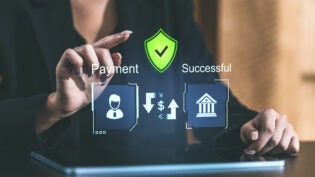
Payments fraud is one of the most persistent threats in today’s digital economy. As businesses adopt faster, more convenient payment technologies, cybercriminals are evolving just as quickly—creating a constant game of cat and mouse. From phishing scams to synthetic identity fraud, the payments industry faces growing risks that can result in significant financial losses, damaged reputations, and reduced customer trust.
In this article, we’ll explore the risks of payments fraud, its impact on businesses and consumers, and the best solutions for preventing fraud in the payments industry.
What Is Payments Fraud?
Payments fraud refers to any illegal transaction or unauthorized activity involving digital or physical payment methods. This includes fraudulent use of credit cards, debit cards, bank accounts, wire transfers, mobile payments, and online checkout systems. Fraudsters use various tactics such as phishing, account takeover, identity theft, and malware to exploit weaknesses in the payments ecosystem.
Common Types of Payments Fraud
Understanding the types of fraud can help businesses identify vulnerabilities and build better defenses. Some of the most common types include:
1. Card-Not-Present (CNP) Fraud
With the rise of e-commerce, CNP fraud has become increasingly common. Fraudsters steal credit card information and use it to make unauthorized online purchases.
2. Account Takeover (ATO)
In an account takeover, a cybercriminal gains access to a customer’s payment account using stolen credentials, often acquired through phishing or data breaches.
3. Business Email Compromise (BEC)
BEC scams involve fraudulent emails that appear to be from a trusted executive or vendor, tricking employees into sending wire transfers or updating payment information.
4. Synthetic Identity Fraud
This type of fraud involves creating a new identity using a combination of real and fake information—often including stolen Social Security numbers—and using it to open accounts or apply for credit.
5. Merchant Fraud
Some bad actors pose as legitimate businesses to open merchant accounts, process payments, and disappear before chargebacks and disputes surface.
The Impact of Payments Fraud
Payments fraud has far-reaching consequences that go beyond the immediate financial loss. Here’s how it affects stakeholders in the ecosystem:
Financial Losses
According to Juniper Research, global losses due to online payments fraud are projected to exceed $91 billion by 2028. Merchants often bear the brunt of the cost through chargebacks, lost revenue, and dispute fees.
Reputational Damage
If customers feel their data isn’t safe, they’ll take their business elsewhere. A single breach or payment fraud incident can erode years of brand trust.
Operational Disruption
Responding to fraud incidents consumes time and resources. It often requires involvement from legal, compliance, IT, and customer service teams—all diverting attention from core operations.
Regulatory Penalties
Non-compliance with data protection laws like PCI-DSS, GDPR, or CCPA can result in heavy fines and legal scrutiny if fraud occurs due to inadequate controls.
Key Drivers of Payments Fraud
Several factors contribute to the rise in payments fraud:
-
Digital transformation: More businesses are moving online, increasing the number of digital payment touchpoints vulnerable to attack.
-
Faster payments: Real-time payments offer convenience but reduce the window for detecting suspicious activity.
-
Data breaches: Massive leaks of personal and payment data fuel identity theft and synthetic fraud.
-
Social engineering: Fraudsters exploit human error through phishing, pretexting, and impersonation.
How to Prevent Payments Fraud
Preventing payments fraud requires a multilayered, proactive approach. Here are the most effective solutions and strategies for fraud prevention:
1. Use Strong Authentication
Implement multi-factor authentication (MFA) for both customer logins and administrative access. Tokenized, biometric, and behavioral authentication methods add powerful layers of protection.
2. Adopt AI-Powered Fraud Detection
Machine learning can detect unusual patterns in real time—flagging potentially fraudulent transactions before they’re completed. Many payment processors now offer AI fraud detection as a service.
3. Tokenization and Encryption
Secure customer data by replacing sensitive payment details with tokens. Encryption ensures that data in transit and at rest remains inaccessible to hackers.
4. Stay PCI-Compliant
Compliance with Payment Card Industry Data Security Standards (PCI-DSS) is essential. Regular audits, secure storage practices, and limited access to cardholder data help minimize risk.
5. Monitor Transactions in Real Time
Use fraud monitoring tools to flag high-risk behaviors like multiple transactions from different IP addresses or rapid changes in account settings.
6. Train Employees on Fraud Awareness
Human error is often the weakest link. Train staff to recognize phishing attempts, verify unusual payment requests, and follow secure payment procedures.
The Role of Payment Service Providers (PSPs)
Working with a trusted payment service provider can help mitigate fraud risk. Reputable PSPs offer built-in fraud detection, risk scoring, chargeback management, and ongoing compliance support. Choose a provider that prioritizes security and regularly updates its fraud prevention tools.
Prevention is Key
Fraud in the payments industry is an evolving threat—but it’s not unbeatable. As digital commerce grows, so too must your defenses. By understanding the risks, assessing the impact, and implementing a robust anti-fraud strategy, businesses can protect themselves and their customers from costly breaches.
The key is proactive prevention: leveraging technology, employee training, and expert partners to create a secure and seamless payments experience. Whether you’re an e-commerce retailer, SaaS provider, or financial services firm, taking fraud seriously is no longer optional—it’s essential for long-term success.
47 Views












